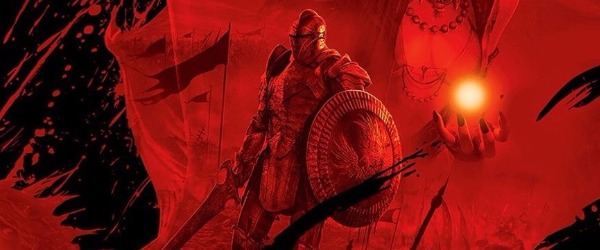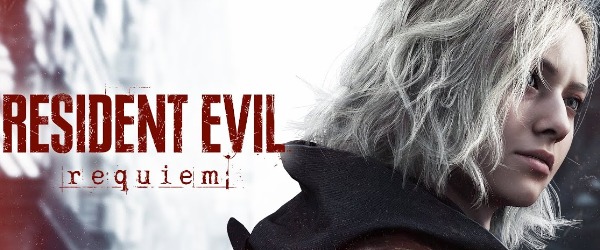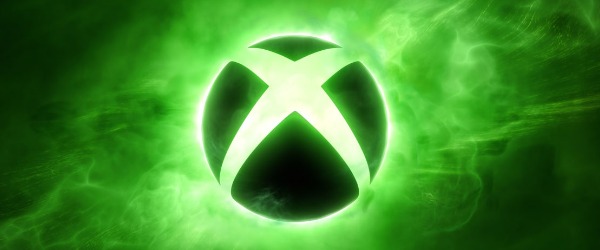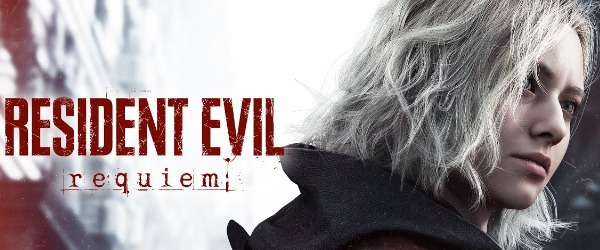
History of Video Games: Nintendo's Resurgence (2007-2008) - Article
by Taneli Palola , posted on 01 July 2016 / 12,428 ViewsWe're getting quite close to present day now, but there are still a few more years to cover before we reach the end of this article series. The period we're covering today looks at the resurgence of Nintendo, with the company being propelled back to the top of the video game world after two generations of struggling to find any traction on the home console front.
In general, the 7th generation of consoles only just started to gain real traction over the course 2007. Although 2007 did not feature any new console hardware it was nonetheless a pivotal year, as sales of both software and hardware saw some huge year-on-year increases. By this stage of course only the PS2 had anything like a significant presence on the market as far as the previous generation hardware was concerned; even the GBA, which had managed to maintain relevance in 2006, was being quickly phased out in favour of the Nintendo DS.

As far as the PS2 went, its few notable releases of the year were smaller profile titles such as Rogue Galaxy, GrimGrimoire, Odin Sphere, Wild Arms 5, and Shin Megami Tensei: Persona 3. Smaller profile JRPGs pretty much took over the console in its later life, as Japanese developers continued to support the platform long after western game creators had abandoned ship. That said, there was at least one more huge game for the PlayStation 2.
That game was God of War II and it released to critical acclaim and great sales in March of 2007, cementing the series' position as one of Sony's most important franchises. God of War II went on to sell over 4 million copies despite releasing towards the end of the PS2's lifespan, making it the console's biggest title of the year by quite a wide margin. It is also often seen as the “swan song” for the aging PlayStation 2 system, and the last truly massive release of the 6th console generation.

Of the newer consoles, the handhelds had been on the market the longest, and as such had already established themselves with strong libraries. Both the PSP and the Nintendo DS had good momentum and were consistently trying to outdo one another. Of course, the DS already had a clear advantage by this stage, having sold over 35 million units by the start of the year, but the PSP actually wasn't that far behind - it surpassed 25 million units shipped by March of 2007.
The DS had another excellent year in terms of games, as pretty much every single video game publisher desperately wanted to take advantage of the handheld's runaway success. During the first half of the year alone the console received Lunar Knights, Etrian Odyssey, Final Fantasy Fables: Chocobo Tales, Hotel Dusk: Room 215 and, most notably, Pokémon Diamond/Pearl, among many others.

The latter half of the year was arguably even better for the console, with games such as Rune Factory: A Fantasy Harvest Moon, DK Jungle Climber, Sonic Rush Adventure, Mario Party DS (The best-selling game on the console for the year), Contra 4, Final Fantasy XII: Revenant Wings, and what was likely the handheld's most anticipated game of the year, The Legend of Zelda: Phantom Hourglass, all launching.
Phantom Hourglass went on to sell over 5 million units, becoming the 4th best-selling game in the entire series, and the highest selling handheld Zelda game ever. It also received a great reception from fans and critics alike. Titles like these drove sales of the system to new heights in 2007 and by the end of the year the DS had sold nearly 65 million units; that's right, in a single year alone it sold roughly 30 million units and almost doubled its lifetime sales.

The PSP had a very good year as well, although understandably it was somewhat overshadowed by the monumental success of the Nintendo DS. Still, Sony's handheld got its fair share of notable games, including the likes of Ratchet & Clank: Size Matters, Final Fantasy Anniversary Edition, Monster Hunter Freedom 2, Final Fantasy Tactics: The War of the Lions, and Prince of Persia: Rival Swords.
Overall the PSP sold around 13 million units in 2007, which was a notable increase on previous years. This brought the total number of PSPs sold to 32 million units, putting to rest all doubts about the lasting success of the system, at least on the hardware front. Of course it had already fallen far behind the DS, but there was no question that Sony's handheld had by this point established itself as a serious contender in the handheld console market.
On the home console side of things, the PS3 and the 360 were practically even, both selling slightly under 8 million units during the year. The Nintendo Wii, on the other hand, was pretty much in a league of its own, selling over 16 million units in 2007. This also meant that before its first full year on the market the Wii had caught up and surpassed the 360 in sales, despite the latter having a year's head-start.
Of the three consoles the PS3 had the thinnest release schedule in 2007, likely due to the console's unusual and complex architecture, which made creating games for the system much more challenging than for its competitors. While most of the true system sellers wouldn't release until later on in the platform's lifecycle, the PS3 did receive some notable games in 2007.
These games included exclusive titles such as Folklore, MotorStorm, Ninja Theory's Heavenly Sword, Ninja Gaiden Sigma, and a game that would go on to spawn one of the console's flagship franchises, Uncharted: Drake's Fortune. Despite being developed by one of Sony's premier developers in Naughty Dog, the first Uncharted had a very slow start as far as sales were concerned, taking almost three weeks to pass 100,000 copies sold. However, the game proved to have exceptionally good legs, and has since gone on to sell nearly 5 million copies.
In addition the console received numerous big multiplatform titles such as The Darkness, Skate, Rock Band, Guitar Hero III: Legends of Rock and one of the most hyped games of the new console generation up to this point, Assassin's Creed. Assassin's Creed received a lot of attention prior to its release, and was an immediate sales success, but it was not critically acclaimed. The main missions were interesting and well crafted, but everything in-between became extremely repetitive very quickly, making it something of a chore to grind through.

By far the biggest multiplatform release of the year was Call of Duty 4: Modern Warfare, which is often still considered the peak of the series. The game propelled the Call of Duty series to the present day, abandoning the WW2 setting that it was synonymous with at that point in time. Modern Warfare received great reviews and has sold over 18 million units. This is effectively the point at which the series became the industry giant it is today.
The Xbox 360 had a very similar year to the PS3, with the two consoles sharing a large portion of the same games, including the multiplatform ones I mentioned above. The biggest difference between the two platforms were the exclusive offerings, which were generally more commercially successful on the Xbox 360.

These included some smaller profile releases such as Eternal Sonata and Blue Dragon, with which Microsoft attempted to lure in Japanese audiences, and games like Crackdown, Forza Motosport 2, and Tom Clancy's Ghost Recon Advanced Warfighter 2, which appealed to more western audiences. Still, the three most important releases for the console in 2007 were undoubtedly the debuts of both BioShock and Mass Effect, as well as the highest profile release on the console thus far - Halo 3.
Halo 3 would quickly become a massive success for Microsoft and the Xbox 360, eventually going on to sell over 12 million copies, making it the best-selling game in the series by a wide margin. Within 24 hours of its release Halo 3 had generated over $170 million, making it the highest grossing opening day in the history of video games up to that point.

Then there was the Wii, which had already become something of a phenomenon. Nintendo had gambled heavily on the console's motion control technology to sell its system to the masses and, as everybody now knows, it paid off immensely. Even the somewhat lacking 3rd party support for the Wii didn't blunt sales, thanks in large part to Nintendo's own efforts at bringing quality and often original games to the system.
Some notable 3rd party titles did come to the Wii, including the highly acclaimed Resident Evil 4: Wii Edition, Zack & Wiki: Quest for Barbaros' Treasure, and Resident Evil: Umbrella Chronicles, all from Capcom. Other developers also supported the Wii but most of their early offerings were rather lackluster, with games like Medal of Honor: Heroes 2 from EA and Nights: Journey of Dreams being considered average at best.
Fortunately, Nintendo had things covered with its own first party line-up. Some of the smaller profile titles tor 2007 included WarioWare: Smooth Moves, Fire Emblem: Radiant Dawn, and Battalion Wars 2, although it's debatable if WarioWare can really be called a smaller profile release since it went on to sell nearly 3 million copies. In addition, million sellers like Super Paper Mario and Mario Party 8 brought even more diversity to the system's game library.

Nintendo also launched the WiiWare service in 2007 to compete with Microsoft and Sony's online marketplaces. Unfortunately, Nintendo's service struggled to become truly successful, due in part to limitations imposed on the games released through it, such as an initial size limit of 40MB on games. Indeed, this restriction even caused some developers to cancel games they intended to release on the Wii. Among these was the Wii version of Super Meat Boy.
The two most important releases of the year for the Wii were Metroid Prime 3: Corruption and Super Mario Galaxy. Metroid Prime 3 was the long-awaited conclusion to the Metroid Prime trilogy and sold close to 2 million copies on the Wii, while Super Mario Galaxy was the first 3D Mario game since Super Mario Sunshine was released in 2002. Galaxy went on to sell over 11 million copies, becoming the 2nd best-selling 3D mario game ever. Additionally, both games received critical acclaim, with Galaxy becoming one of the highest rated video games of all time.

On PC things were generally progressing as usual, with a number of great games coming out in 2007. These included RTS titles such as Supreme Commander and Command & Conquer 3: Tiberium Wars, FPS titles like S.T.A.L.K.E.R.: Shadow of Chernobyl and Crysis, and RPGs like Guild Wars: Eye of the North and The Witcher, among numerous other games.
2008 continued the upward trajectory of the console market, as every single major current generation platform saw increased sales compared to the previous year. However, it also marked the final year that the PS2 would be considered a relevant platform; most developers had already abandoned the system but even those who hadn't would soon follow suit.
I mentioned earlier that God of War II is often considered the PS2's swan song, but for me personally its swan song is Persona 4, which is quite possibly the last truly significant release on the console. From that point onwards the PS2 mostly only received yearly sports releases, party games, and shovelware titles that were looking to squeeze out what little money there was left in the PS2 ecosystem.

The DS on the other hand was still on its way up, selling ridiculous amounts every single month. It basically matched its previous year, falling just short of 30 million units sold, bringing the platform's sales total up to nearly 94 million in slightly over 4 years. For comparison, it took the PS2 5 years and 9 months to reach 100 million units sold.
Given the enormous install base it's no surprise that developers flocked to the platform. Square Enix especially seemed to be busy bringing as many games to the handheld as possible. These included Valkyrie Profile: Covenant of the Plume, the remakes of Chrono Trigger and Dragon Quest V: Hand of the Heavenly Bride, and cult classic The World Ends With You. In addition the system received Castlevania: Order of Ecclesia and Etrian Odyssey II: Heroes of Lagaard from other 3rd party developers.
Nintendo was also responsible for numerous notable releases on the DS as well. Games like Advance Wars: Days of Ruin, Fire Emblem: Shadow Dragon (a remake of the first game in the series), Kirby Super Star Ultra and, most importantly, Pokèmon Platinum all helped ensure the Nintendo DS maintained its heavy momentum.

Sony's PSP also had an excellent year both in terms of hardware units sold as well as new software releases. The handheld sold over 14 million units in 2008 alone, which would end up being its peak yearly performance. While not even close to the numbers the DS was able to achieve at its peak, this was actually more than any other non-Nintendo handheld has ever sold lifetime (the PS Vita sits at 13.9 million at the time of writing).
In terms of software the PSP played host to small but acclaimed titles like Patapon 2, LocoRoco 2, and Echochrome, as well as big hitters like Dissidia Final Fantasy, Monster Hunter Freedom Unite, Crisis Core: Final Fantasy VII, and God of War: Chains of Olympus. Monster Hunter Freedom Unite would actually go on to become the 2nd best-selling game on the PlayStation Portable, with total sales of around 5.5 million copies.

By 2008 the PS3 was starting to pick up the pace and finally had a steady software release schedule. The console managed to sell over 10 million units in 2008 - an increase of over 2 million over the previous year - and although it was still clearly in last place out of the three main home consoles, jokes about the console having no games were starting to become seriously dated by the end of the year.
Notable multiplatform releases on the console in 2008 included Soul Calibur IV, Dead Space, Prince of Persia, Devil May Cry 4, and by far the biggest release of the year on both the PS3 and 360, Grand Theft Auto IV, which went on to sell over 10 million copies on the PS3 alone.
In addition the PS3 was starting to receive a steady supply of exclusives. 2008 brought with it the likes of Ratchet & Clank: Quest for Booty, MotorStorm: Pacific Rift, Siren: Blood Curse, Resistance 2, and Valkyria Chronicles, which is one of my personal favourite games of the 7th console generation. Valkyria Chronicles became a surprise hit, going on to sell over 1.2 million copies and spawning two handheld sequels (as well as a recent remaster).

The two biggest PS3 exclusives of 2008 were Media Molecule's LittleBigPlanet, a puzzle platformer with heavy emphasis on user-generated content that other players could play, and one of the most hyped games of the year, Metal Gear Solid IV: Guns of the Patriots. Both games were highly successful commercially, with each going on to sell around 6 million copies on the console. They were also among the most highly rated games of the year across all platforms. Games like these were helping the PS3 to become a competitive system after having a very rough start.
The Xbox 360 still had a significant advantage over the PS3 at this stage, with most multiplatform games performing better on the Xbox 360. As such, titles like Army of Two, Tom Clancy's Rainbow Six: Vegas 2, Saints Row 2, Rock Band 2, Far Cry 2, Battlefield: Bad Company, Condemned 2: Bloodshot, Mirror's Edge, Call of Duty: World at War, and Fallout 3 all generally helped the Xbox 360 just that little bit more. In addition, the Xbox 360 was the first platform to receive Braid, which has come to be seen as one of the sign posts for the rising popularity of indie games.

Of course, the console also got a number of high profile exclusive titles as well, including Tales of Vesperia, Ninja Gaiden II, Fable 2, and Lost Odyssey. Additionally, Gears of War 2 was the year's biggest exclusive release on the Xbox 360. It built on the success of the first game by selling nearly 7 million copies and thus established itself as one of the Xbox 360's most important exclusive franchises.
While the PS3 and Xbox 360 were trading blows on roughly equal footing, the Wii was on a whole other level as far as sales were concerned. In 2008 the PS3 and Xbox 360 sold 21 million units combined. During that same time the Wii outsold them both by itself, shifting over 24 million units. This would, however, end up bring the Wii's peak year.
In terms of software releases the Wii received Boom Blox, LostWinds, Wario Land: Shake It!, Fatal Frame: Mask of the Lunar Eclipse (only released in Japan), Mega Man 9, World of Goo, No More Heroes, and Okami, which brought a huge amount of variety to the console's game library. There were great games available in just about every genre imaginable on the console by this point.

Still, there was no doubt which titles were most important for the Wii in 2008. The first was Super Smash Bros. Brawl, the long awaited third entry in the Super Smash Bros. series. The other was Mario Kart Wii, one of the most successful video games ever released. Brawl was a huge success as well, selling over 13 million copies, but Mario Kart Wii eventually went on to sell nearly 36 million copies and for six straight years sold at least 1 million copies every year. It is now the 3rd best-selling game of all time, only behind Wii Sports and Super Mario Bros. for the NES.
PC also had another very good year as it received most of the multiplatform releases that the Xbox 360 and PS3 got as well as titles like Civilization IV: Colonization, Brothers in Arms: Hell's Highway, Command & Conquer: Red Alert 3, World of WarCraft: Wrath of the Lich King, Left 4 Dead, Sins of a Solar Empire, and Flatout: Ultimate Carnage.

2008 was one of the biggest years of all time for the video game industry, with Nintendo especially having an absolutely phenomenal year; the Nintendo DS and Wii achieved combined sales of over 43 million units. The new generation's other platform all saw increased sales as well, and over a hundred games sold over one million copies.
Next time, however, we'll witness the Wii's decline and the PS3's rise to prominence as from 2009 onwards it began to seriously claw its way back into what ultimately proved to be a remarkably close home console race. But that's all for now. As always, thanks for reading.
More Articles
I still remember that internet article that predicted the Wii's success 100% accurately and how it would win its gen... as an April Fool's joke. Oh, the irony in that still makes me laugh.
I need a link to that article hahaha!
What a great generation. The DS, Wii, PSP, PS3, Xbox 360, and PC all ended up being great choices for this generation. Unforgettable generation.
Agreed, Gen 7 was amazing.
2007 was such an amazing year; Mario Galaxy, Metroid Prime 3, Bioshock, Modern Warfare, Mass Effect, Portal...
It should also be noted that Nintendo made nearly 11 billion USD in profits during this time period as well.
Nintendo's resurgence. 2017-2018
That would be insane. It would be like Nintendo rising up from the dead like nothing ever happened.
2008 probably the biggest year in console gaming ever. Wii, PS3, X360, DS, PSP sold 89 million. 2015 just 42 million.
This gen is horrendous compared to last one.
While this gen is far from perfect, we have had great games and consoles. At least the Wii u and vita have enough enjoyable titles(even though they aren't doing well). We've also reached a point where gaming is cheaper than ever. VR is also something to look forward to. Every gen will have its ups and downs. It's just gen 7 that somehow had a near perfect record
I wouldn't say the 7th gen "near perfect". After all, last gen was the gen that brought us DLC, fractured games being sold as full games, games shipping in beta form, online multiplayer overtaking single player, the rise of digital... it'll probably be remembered as the death of tradition console gaming more than anything else.
2008 was the year i got the xbox 360 after owning a ps2 and og xbox. Got it for Halo 3.
While the motion controls were certainly a gimmick, a gimmick that was often unnecessary, and sometimes even ruined otherwise decent games (Godzilla Unleashed, Soul Calibur Legends, etc.), the Wii was the console that technically "got me back into gaming".
I had never gotten OUT of it, per say, but I never did buy a GC, and only got a used PS2 in 2004. In general, while there were many games I saw or played on friends' consoles during that gen, I just wasn't as interested in general. But when Wii came along, that changed, thanks in part to games like Super Paper Mario, Mario Galaxy, Metroid Prime 3, Brawl, Muramasa, Okami, Wario Land, etc.
Being a much bigger "retro gamer" than modern gamer, part of what attracted me about Wii, was that it had a lot of 2D games, like NSMB, A Boy and His Blob, Super Paper Mario, Muramasa, Wario Land, Kirby, DKCR, etc., along with some great WiiWare games like Cave Story, Lost Winds, La-Mulana, FFIV: The After Years, MM9, Castlevania & Contra Rebirth, etc. Not to mention the Virtual Console service on Wii, while it certainly could have had even MORE games than it had, was pretty amazing for it's time. Sure, you could have a lot of those games for free via emulators. But it was pretty cool to be able to have them, legally, on one system: games from NES, SNES, Master System, Genesis, TG16, Neo Geo, N64, etc.
The other thing that was nice about Wii, was 100% GC backwards comparability, so that I could get a bunch of GC games for it, since I'd never owned the GC itself. That also meant I could use the awesome Wavebird controller, even with many Wii games. And that in itself was awesome: the sheer number of control options. While many Wii games did in fact have tacked on motion controls as your only option, many others gave you a wide array of choices, such as Wiimote NES style, Wiimote + Nunchuck, Classic Controller (and later Pro), the Zapper thing, and of course GC controllers.
All in all not a perfect system, and it could have been more powerful, but it also had a lot of games I was actually interested in and wanted to own. Which, sadly, I cannot say about the Wii U, even though I bought it at launch in 2012. Wii U has had some good games, don't get me wrong. But IMO, nothing on the "great" scale, nor the sheer level of library diversity that Wii had. I really hope they pick it back up again with NX, even though I am very unhappy about how they're handling Zelda.






















 Essay Pro
Essay Pro